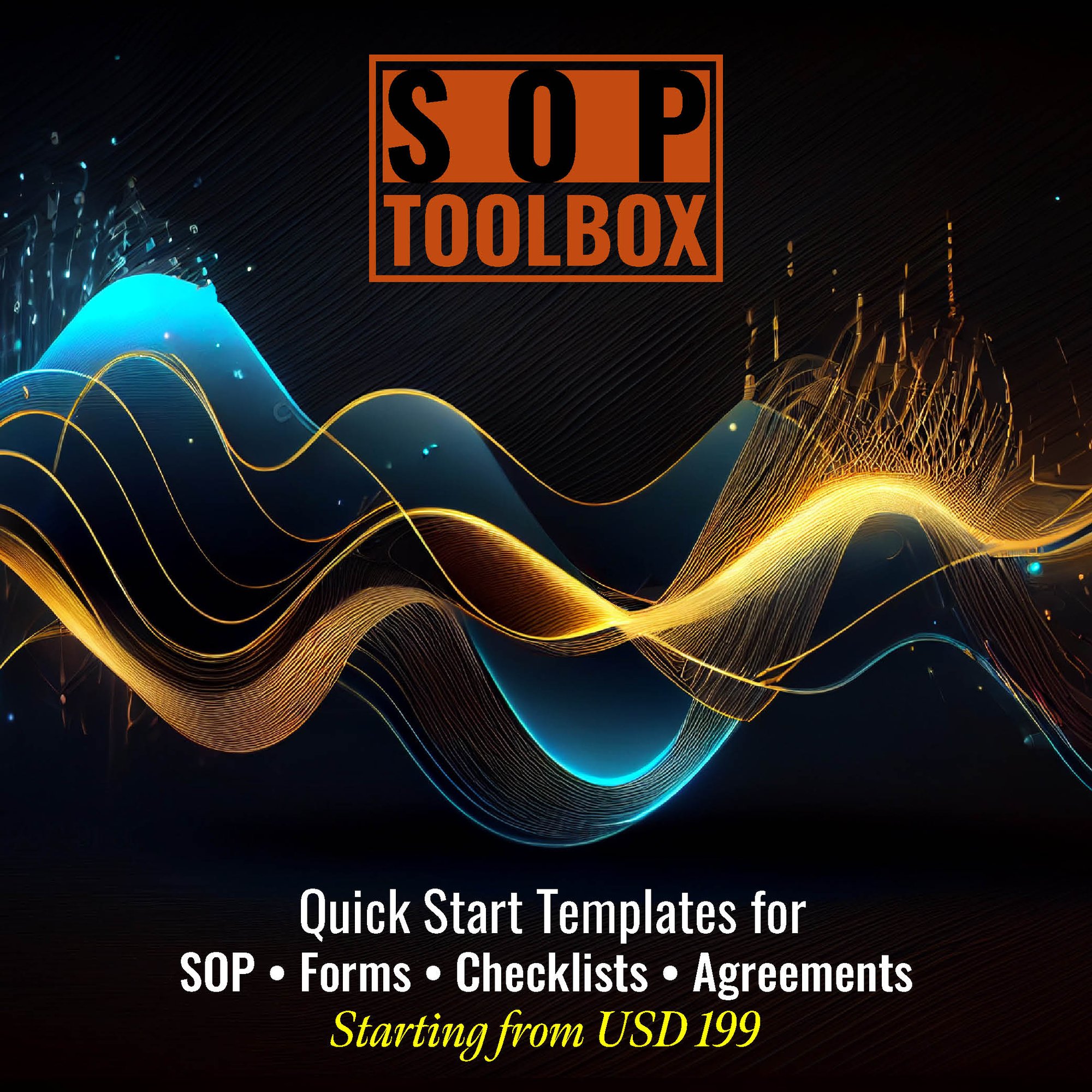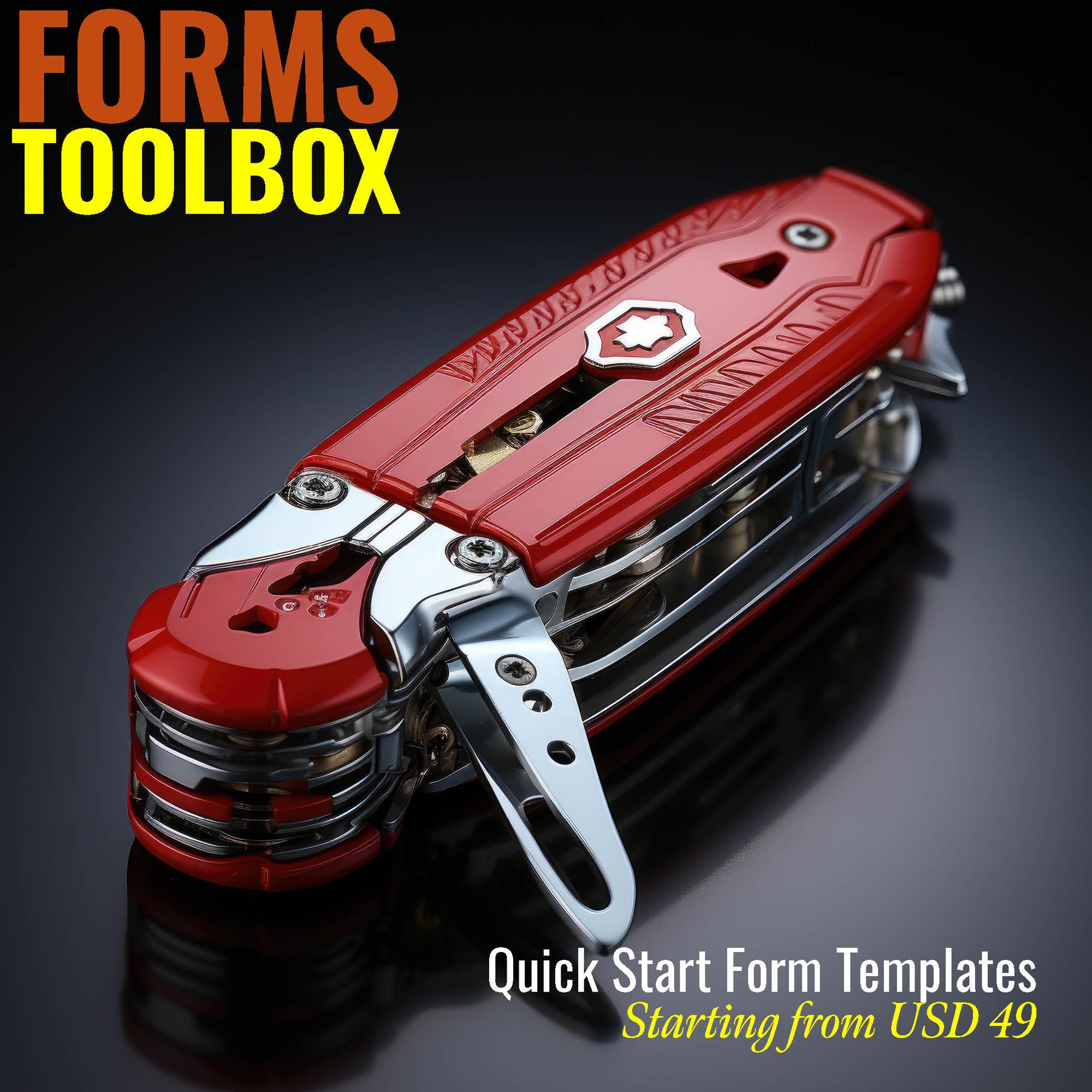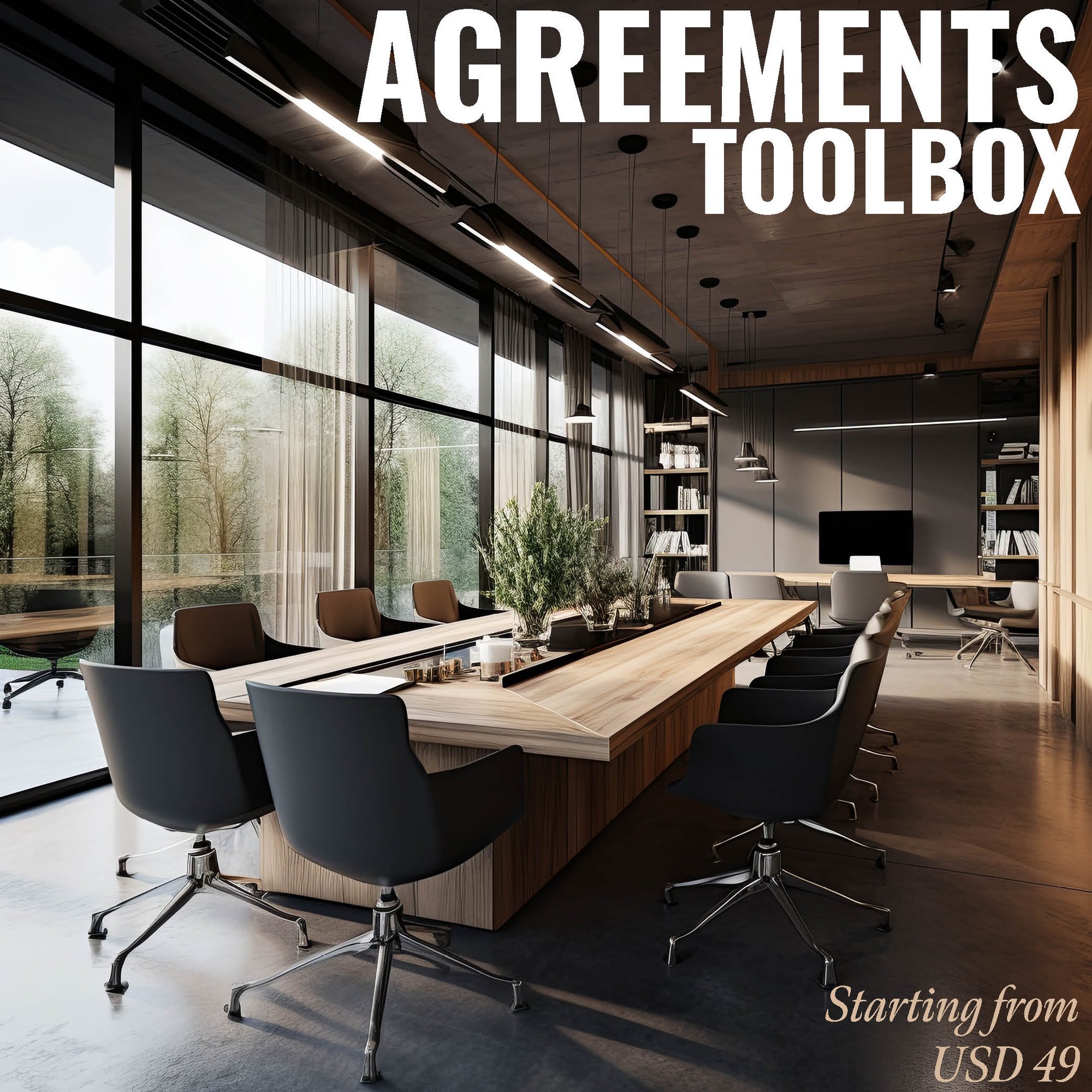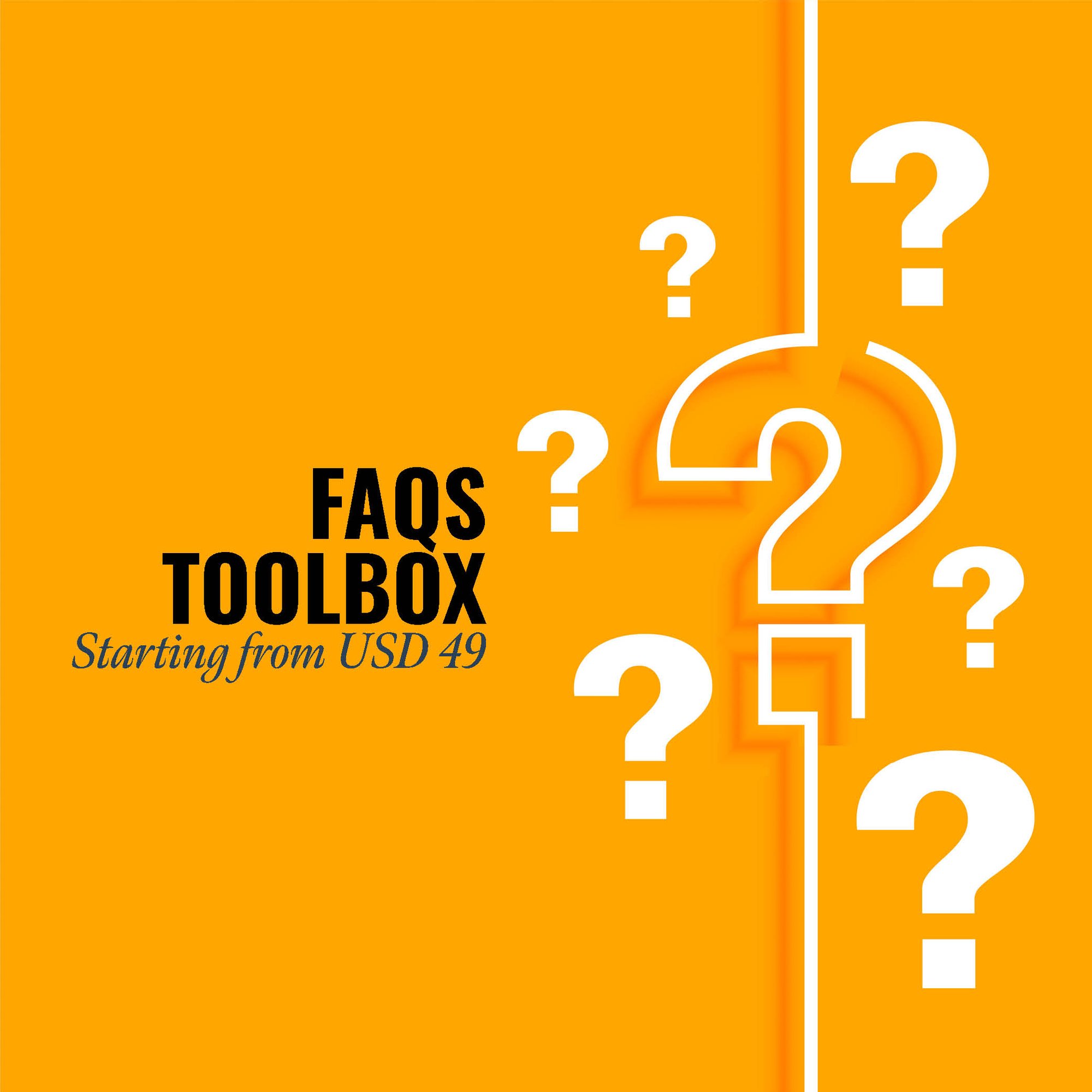The significance of an SOP (Standard Operating Procedure) Manual for Other Crushed and Broken Stone Mining and Quarrying is profound in promoting operational efficiency, safety, and environmental responsibility. Firstly, it establishes standardized procedures for mining, crushing, and processing operations, ensuring consistency and quality in the production of crushed stone. This consistency contributes to product quality and customer satisfaction. Secondly, the manual becomes a critical tool for training personnel, providing clear guidelines for safe and efficient mining practices. Thirdly, it plays a pivotal role in risk management by addressing safety protocols, environmental regulations, and community impact considerations. Additionally, the SOP Manual contributes to regulatory compliance, reducing the likelihood of legal issues. By providing a structured framework, it supports sustainable quarrying practices, fostering responsible resource management. Overall, the manual elevates the professionalism, safety standards, and environmental consciousness of the crushed stone mining and quarrying industry.
CLICK HERE to download the List of SOPs Document in PDF format. Please share this document with your clients, colleagues and senior officers.
Top 50 Standard Operating Procedures (SOPs) for Crushed and Broken Stone Mining and Quarrying
SOP-031-001: Standard Operating Procedure for site selection
SOP-031-002: Standard Operating Procedure for permitting and licensing
SOP-031-003: Standard Operating Procedure for geological survey
SOP-031-004: Standard Operating Procedure for drilling and blasting
SOP-031-005: Standard Operating Procedure for excavation procedures
SOP-031-006: Standard Operating Procedure for equipment operation
SOP-031-007: Standard Operating Procedure for haulage and transportation
SOP-031-008: Standard Operating Procedure for dust control measures
SOP-031-009: Standard Operating Procedure for emergency response
SOP-031-010: Standard Operating Procedure for material handling

SOP-031-011: Standard Operating Procedure for waste management
SOP-031-012: Standard Operating Procedure for water management
SOP-031-013: Standard Operating Procedure for noise control
SOP-031-014: Standard Operating Procedure for vegetation management
SOP-031-015: Standard Operating Procedure for bench maintenance
SOP-031-016: Standard Operating Procedure for geotechnical monitoring
SOP-031-017: Standard Operating Procedure for surveying practices
SOP-031-018: Standard Operating Procedure for blasting safety
SOP-031-019: Standard Operating Procedure for crushing and screening
SOP-031-020: Standard Operating Procedure for workplace safety
SOP-031-021: Standard Operating Procedure for hazardous materials handling
SOP-031-022: Standard Operating Procedure for air quality monitoring
SOP-031-023: Standard Operating Procedure for groundwater management
SOP-031-024: Standard Operating Procedure for community relations
SOP-031-025: Standard Operating Procedure for equipment calibration
SOP-031-026: Standard Operating Procedure for fire prevention
SOP-031-027: Standard Operating Procedure for maintenance and inspection records
SOP-031-028: Standard Operating Procedure for training and education
SOP-031-029: Standard Operating Procedure for contractor management
SOP-031-030: Standard Operating Procedure for community outreach programs

SOP-031-031: Standard Operating Procedure for equipment purchase and retirement
SOP-031-032: Standard Operating Procedure for slope stabilization techniques
SOP-031-033: Standard Operating Procedure for vibration monitoring
SOP-031-034: Standard Operating Procedure for dewatering practices
SOP-031-035: Standard Operating Procedure for public safety measures
SOP-031-036: Standard Operating Procedure for electrical safety
SOP-031-037: Standard Operating Procedure for reclamation planning
SOP-031-038: Standard Operating Procedure for environmental audits
SOP-031-039: Standard Operating Procedure for regulatory reporting
SOP-031-040: Standard Operating Procedure for chemical storage and handling
SOP-031-042: Standard Operating Procedure for public relations
SOP-031-043: Standard Operating Procedure for revegetation techniques
SOP-031-044: Standard Operating Procedure for security measures
SOP-031-045: Standard Operating Procedure for subcontractor safety
SOP-031-046: Standard Operating Procedure for wildlife management
SOP-031-047: Standard Operating Procedure for land use planning
SOP-031-048: Standard Operating Procedure for erosion and sediment control
SOP-031-049: Standard Operating Procedure for welding and cutting safety
SOP-031-050: Standard Operating Procedure for sustainable mining practices
SOP ToolBox: If you are reading these lines, I am sure you are looking for Standard Operating Procedure guidelines or SOPs itself. In both the cases, searching in internet will not be yielding any great help. Because no company shares their SOP Development Process and certainly don’t share their SOP Documents. The best way to develop an SOP is creating one for yourself. At Fhyzics, we write SOPs day-in and day-out for companies across the globe including some of the Fortune 500 organisations. Our charge ranges from USD 5000 to USD 50000 depending upon the number of processes to be covered. Certainly, this is not affordable to small and mid-size organisations. Hence, we decided to create this SOP ToolBox to disseminate our 8-Step SOP Development Life-Cycle and best practices at an unbelievably low price.
I always say, writing an SOP is somewhere between art and science. So far you may be clueless on where to start and how to progress on an SOP? This will not be the case after you diligently go through this SOP ToolBox. We have summarised all our secrets here to get you started and to deliver a stunning SOP to your management.
- Selective mining methods:
- Cut and fill
- Drift and fill
- Shrinkage stopping
- VRM/ VCR
- Bulk mining methods:
-
Block caving
-
Room and pillar mining
1. Standard Operating Procedures (SOP) Manual for Accounts Department
2.Standard Operating Procedures (SOP) Manual for Finance Department
3. Standard Operating Procedures (SOP) Manual for Customer Service
4. Standard Operating Procedures (SOP) Manual for CRM Department
5. Standard Operating Procedures (SOP) Manual for Credit Department
6.Standard Operating Procedures (SOP)Manual for Treasury Department
7.Standard Operating Procedures (SOP) Manual for Human Resources (HR) Department
8. Standard Operating Procedures (SOP) Manual for Training Department
9. Standard Operating Procedures (SOP) Manual for Learning & Development Department
10. Standard Operating Procedures (SOP) Manual for Administration Department
11. Standard Operating Procedures (SOP) Manual for Front Office
12. Standard Operating Procedures (SOP) Manual for House Keeping
13. Standard Operating Procedures (SOP) Manual for Safety Department
14. Standard Operating Procedures (SOP) Manual for Security Department
15. Standard Operating Procedures (SOP) Manual for Facilities Management Department
16. Standard Operating Procedures (SOP) Manual for Vigilance Department
17. Standard Operating Procedures (SOP) Manual for Legal Department
18. Standard Operating Procedures (SOP) Manual for Information Technology (IT) Department
19. Standard Operating Procedures (SOP) Manual for Sales & Marketing Department
20. Standard Operating Procedures (SOP) Manual for Design & Engineering
21.Standard Operating Procedures (SOP) Manual for Procurement Department
22. Standard Operating Procedures (SOP) Manual for Production
23. Standard Operating Procedures (SOP) Manual for SRM Department
24.Standard Operating Procedures (SOP) Manual for Supply Chain Department
25. Standard Operating Procedures (SOP) Manual for Warehouse
26. Standard Operating Procedures (SOP) Manual for New Product Development Department
27. Standard Operating Procedures (SOP) Manual for Research and Development
28. Standard Operating Procedures (SOP) Manual for Quality Department
29. Standard Operating Procedures (SOP) Manual for Calibration Department
30. Standard Operating Procedures (SOP) Manual for Maintenance Department
31. Standard Operating Procedures (SOP) Manual for Logistics Department
- Development mining:
- remove previously blasted material
- scaling
- installing support or/and reinforcement using short Crete
- drill face rock
- load explosives
- Blast explosives
- Production mining:
-
Long hole
-
Short hole
This industry comprises:
- Basalt crushed and broken stone mining and/or beneficiating
- Bituminous limestone mining and/or beneficiating
- Bituminous sandstone mining and/or beneficiating
- Boulder crushed and broken mining and/or beneficiating
- Diabase crushed and broken stone mining and/or beneficiating
- Dolomitic marble crushed and broken stone mining and/or beneficiating
- Gabbro crushed and broken stone mining and/or beneficiating
- Ganister crushed and broken stone mining and/or beneficiating
- Granules, slate, mining and/or beneficiating
- Grits crushed and broken stone mining and/or beneficiating
- Limestone, bituminous, mining and/or beneficiating
- Marble crushed and broken stone mining and/or beneficiating
- Mica schist crushed and broken stone mining and/or beneficiating
- Onyx marble crushed and broken stone mining and/or beneficiating
- Quartzite crushed and broken stone mining and/or beneficiating
- Riprap (except granite, limestone) preparation plants
- Riprap (except limestone and granite) mining or quarrying
- Sandstone crushed and broken stone mining
- Schist, mica, crushed and broken stone, mining and/or beneficiating
- Serpentine crushed and broken stone mining and/or beneficiating
- Slate crushed and broken stone mining and/or beneficiating
- Stone (except limestone and granite) beneficiating plants (e.g., grinding)
- Stone, crushed and broken (except granite or limestone), mining and/or beneficiating
- Trap rock crushed and broken stone mining and/or beneficiating
- Verde' antique crushed and broken stone mining and/or beneficiating
- Volcanic rock crushed and broken stone mining and/or beneficiating
- Caterpillar Inc. in Illinois, US |
https://www.caterpillar.com/en/company.html - Bamford Excavators Limited in Rochester, UK |
https://www.jcb.com/en-in - CNH Industrial N.V in London, UK |
https://www.cnhindustrial.com/ - Hitachi Construction Machinery Co., Ltd. In Tokyo, Japan |
https://www.hitachicm.com/ - Deere & Company in Illinois, US|
https://www.deere.com/ - Kobelco Construction Machinery Co. Ltd in Hiroshima, Japan |
https://www.kobelcocm-global.com/ - Komatsu Ltd in Tokyo, Japan |
https://home.komatsu/en/ - Liebherr Group in Kirchdorf, Germany |
https://www.liebherr.com/ - Manitou Group in Ancenis, France |
https://www.manitou-group.com/en/ - Mitsubishi Heavy Industries, Ltd. In Tokyo, Japan |
https://www.mhi.com/
- Industries nowadays moving towards renewable energies which have made these manufacturing companies’ future a doubt.
- The mobility of these machineries is very difficult since they all are heavy vehicles and mines exist in a tough terrain so, manufacturers are in utmost needed to reduce the weight of the machineries nowadays.
- Maintenance of these machineries requires lots of work force and there is lack of work force in this industry.
- Automation of these machines is still not adapted by many industry people since they are not aware of it.
- Very competitive industry there is a price war between the top companies because to expand their market share.
- Safety of the miners inside the mines is a very big concern.
- Federation of Indian mineral industries |
http://www.fedmin.com/ - National mining associations |
https://nma.org/ - Association of equipment manufacturers |
https://www.aem.org/ - Process plant & machinery association of India |
https://www.ppmai.org/
- Mining technology |
https://www.mining-technology.com/ - Equipment magazines |
https://equipmentindia.com/ - Plant & equipment |
https://www.plantandequipment.com/magazines - Equipment contracting |
https://www.equipmentandcontracting.com/ - Earthmovers |
https://www.earthmoversmagazine.co.uk/ - World mining |
https://issuu.com/worldminingmagazine
Research By : Eshwaran Murugappan
Please click here to review the SOP Templates’ Terms & Conditions.
Keywords: sop, manual, policy, sop meaning, sop full form, standard operating procedure, full sop, user manual, sop is, user guide, instruction manual, owners manual, sample sop, operators manual, sop example,standard operating procedure examples, abbreviation sop, standard operating procedure sample, milk sop, sop document, sop process,m manual, operating procedures, operating process, sop meaning in hindi, standard procedure, sop standard operating procedure, sop top, sop writing, standard operating procedures manual, sop meaning in english, sample sop for mba, standard operating procedures examples in office, product manual, sample sop for ms, maintenance manual, sop security, sop in research, sop in business, whats sop, standard of operation, sop set, sop procedure, sop marketing,sop training, sop hotel, sop, sop meaning business, sop form, sba sop,sop software, help manual, sop it, army sop, company sop, sop sap, o m manual, standard operating procedure examples for small business, shop manual, sop manual, sop meaning in business, purpose of standard operating procedures, sop full meaning, standard operating procedure meaning, sop military, sop standard, sop meaning medical, hr sop, sop production, purpose of sop, sop management, warehouse sop, sales sop, sop pharma, sop manufacturing, sop creation, sop laboratory, ms sop, sop full form in hindi, sop front office, sop customer service, sop online, gmp sop, sop purchasing, sop pharmacy, sop safety, sop for project management,sample sop for australian student visa, sop meaning in tamil, sop system, best sop, sop up, sop in english, sop for mechanical engineering, sop for university,sop in malay, sop lab, sop for business analytics, sop model, sop in pharmacy, developing sops, standard operating procedure examples manufacturing, sop full form in retail,sop full form in medical, sop engineering, sop application, writing standard operating procedures, procurement sop, sop maintenance,standard operating procedure nhs, sop clinical trial, sop operations,sop in construction, operating procedures manual, standard operating procedure ppt, standard procedure meaning, sop ppt, a sop, sop document meaning, sop def, sop full form in safety, sop quality control, sop for college, sop quality, sop service, types of sop, sop for engineering management, sop document sample, benefit of sop, preparing sop, standard operating procedure in hindi, sop for visa, sop compliance, sop protocol, sop aviation, sop meaning in chat, standard operating process, sop meaning military, sop for business management, standard operating procedure software, sop list, sop medical, sop logistics, sop project, sop for it department, sop call center, standard work procedures, sba sop 50 10, sop meaning in logistics, standard operating procedure laboratory, test sop, sop sample for ms, drafting sop, sops meaning in tamil, sops meaning in telugu, sop automotive, standard operating system, sop cafe, sop slideshare, sop ap, sop bank, sop in retail, creating standard operating procedures, sop admin, document control sop, pharmaceutical sop,sop in pharmaceutical industry, statement of purpose harvard, sop examples for ms, quality assurance sop, sop in clinical research, nursing sop, sop for transportation, sop policies, sops are specific to a process, sop in hindi, standard operating procedure for warehouse picking, master sop, list of sop for pharma, pharmaceutical sop examples, types of standard operating procedures, retail sop, sample sop for ms in mechanical engineering, standard operating protocol,sop supply chain, system operating procedure, sop rules, example of sop in research, sop in food industry, sop for international business management, sop for hospitality management, sop for hr department, army sop example, sop standard operating, office sop, hr standard operating procedures, preventive maintenance sop, sop for purchase department, human resources sop, fire department sops, information technology sop, operating procedure example, administration sop,sop for retail store, indian sop, construction management sop, sop hotel front office, example sop document, standard and procedures,working sop, sop for maintenance department, sop hrd department,sop full form in hotel industry, sop full, sop for human resource management, laboratory sop examples, standard operating procedure for quality control, sop for ms in mechanical engineering, sop meaning army, security standard operating procedures, sop machine, sample sop for internship, sop for hotel management, sample sop for masters, qa sop, developing standard operating procedures, standard operating procedure document, product recall sop, marketing statement of purpose, it standard operating procedures, equipment sop, sop purpose example, sop shipping, sop for sales and marketing,converting pos to sop, workshop sop, standard operating procedure manufacturing, digital marketing standard operating procedures, following standard operating procedures, sop ki full form, sop for nursing procedures, an sop, purchase sop for manufacturing company, sop a, statement of purpose for mba marketing, full meaning of sop, sop for research internship, research sop sample,vendor qualification sop, sop purchasing and receiving, sop meaning in visa, sop for admission, standard operating procedure medical office, sop in industry, sop sales marketing, navy sop, project management standard operating procedures, sop it support, standard operating manual, security operating procedures, statement of purpose for international business, procurement standard operating procedures, communication sop, sop full form in pharma, minimum sop, sop health and safety, product sop, sop for marketing department, sop in medical terms, sales standard operating procedure, sop purchase order, department sop, customer service standard operating procedures, clinical sop, marketing standard operating procedure, sop standard operating procedure example, construction standard operating procedures, standard of operations procedures manual sample, sop for facility management, sop full form in education, standard operating procedure in food industry, visa sop,sop for business administration, company sop meaning, sop work, sop operating procedure, sop for summer internship in engineering sample, general administration sop, sop for administrative duties.
Our SOP Templates’ clients are from the following States and Countries:
Alabama, Alaska, Arizona, Arkansas, California, Colorado, Connecticut, Delaware, Florida, Georgia, Hawaii, Idaho, Illinois, Indiana, Iowa, Kansas, Kentucky, Louisiana, Maine, Maryland, Massachusetts, Michigan, Minnesota, Mississippi, Missouri, Montana, Nebraska, Nevada, New Hampshire, New Jersey, New Mexico, New York, North Carolina, North Dakota, Ohio, Oklahoma, Oregon, Pennsylvania, Rhode Island, South Carolina, South Dakota, Tennessee, Texas, Utah, Vermont, Virginia, Washington, West Virginia, Wisconsin, Wyoming.
Afghanistan, Albania, Algeria, Andorra, Angola, Antigua and Barbuda, Argentina, Armenia, Australia, Austria, Azerbaijan, Bahamas, Bahrain, Bangladesh, Barbados, Belarus, Belgium, Belize, Benin, Bhutan, Bolivia, Bosnia and Herzegovina, Botswana, Brazil, Brunei Darussalam, Bulgaria, Burkina Faso, Burundi, Cabo Verde, Cambodia, Cameroon, Canada, Central African Republic, Chad, Chile, China, Colombia, Comoros, Congo (Republic of the), Costa Rica, Croatia, Cuba, Cyprus, Czech Republic (Czechia), Democratic People’s Republic of Korea (North Korea), Democratic Republic of the Congo, Denmark, Djibouti, Dominica, Dominican Republic, Ecuador, Egypt, El Salvador, Equatorial Guinea, Eritrea, Estonia, Eswatini, Ethiopia, Fiji, Finland, France, Gabon, Gambia, Georgia, Germany, Ghana, Greece, Grenada, Guatemala, Guinea, Guinea-Bissau, Guyana, Haiti, Honduras, Hungary, Iceland, India, Indonesia, Iran, Iraq, Ireland, Israel, Italy, Jamaica, Japan, Jordan, Kazakhstan,Kenya, Kiribati, Kuwait, Kyrgyzstan, Lao People’s Democratic Republic (Laos), Latvia, Lebanon, Lesotho, Liberia, Libya, Liechtenstein, Lithuania, Luxembourg, Madagascar, Malawi, Malaysia, Maldives, Mali, Malta, Marshall Islands, Mauritania, Mauritius, Mexico, Micronesia (Federated States of), Moldova, Monaco, Mongolia, Montenegro, Morocco, Mozambique, Myanmar (Burma), Namibia, Nauru, Nepal, Netherlands, New Zealand, Nicaragua, Niger, Nigeria, North Macedonia (formerly Macedonia), Norway, Oman, Pakistan, Palau, Panama, Papua New Guinea, Paraguay, Peru, Philippines, Poland, Portugal, Qatar, Republic of Korea (South Korea), Republic of the Congo, Romania, Russian Federation (Russia), Rwanda, Saint Kitts and Nevis, Saint Lucia, Saint Vincent and the Grenadines, Samoa, San Marino, Sao Tome and Principe, Saudi Arabia, Senegal, Serbia, Seychelles, Sierra Leone, Singapore, Slovakia, Slovenia, Solomon Islands, Somalia, South Africa, South Sudan, Spain, Sri Lanka, Sudan, Suriname, Sweden, Switzerland, Syrian Arab Republic (Syria), Tajikistan, Thailand, Timor-Leste, Togo, Tonga, Trinidad and Tobago, Tunisia, Turkey, Turkmenistan, Tuvalu, Uganda, Ukraine, United Arab Emirates, United Kingdom of Great Britain and Northern Ireland, United Republic of Tanzania, United States of America, Uruguay, Uzbekistan, Vanuatu, Venezuela, Viet Nam, Yemen, Zambia, Zimbabwe.
Fhyzics supports organisations in developing the following documentations:
Standard Operating Procedures (SOPs), Work Instructions, Policies and Procedures, Process Flow Diagrams, Job Descriptions, Training Manuals, Employee Handbooks, Compliance Guidelines, Quality Assurance Manuals, Health and Safety Procedures, Risk Management Plans, Business Continuity Plans, Internal Audit Procedures, Incident Reporting Forms, Performance Management Guidelines, Change Management Procedures, Vendor Management Guidelines, Customer Service Protocols, IT Security Policies, IT Support Documentation, Disaster Recovery Plans, Operational Checklists, Data Management Policies, Confidentiality Agreements, Non-Disclosure Agreements, Employee Onboarding Procedures, Employee Exit Procedures, Performance Appraisal Forms, Employee Code of Conduct, Conflict Resolution Procedures, Product Development SOPs, Supply Chain Management Guidelines, Procurement Guidelines, Inventory Management SOPs, Shipping and Receiving Procedures, Production Scheduling SOPs, Maintenance Procedures, Equipment Calibration Documents, Environmental Compliance Documentation, Sustainability Policies, Customer Feedback Forms, Marketing Strategies, Advertising Guidelines, Brand Management Guidelines, Product Packaging SOPs, Laboratory Testing Procedures, Regulatory Compliance Documentation, Tax and Accounting Procedures, Contract Management Procedures, Legal Compliance Guidelines, Financial Reporting Procedures, Budgeting Procedures, Internal Control Procedures, Fraud Prevention Policies, Asset Management Guidelines, Purchase Order Procedures, Sales and Distribution Guidelines, Client Contracts, Customer Return Policies, Internal Communication Protocols, Vendor Evaluation Forms, Product Safety Standards, Workplace Health and Safety Standards, Public Relations Procedures, Social Media Management Guidelines, Crisis Management Plans, Employee Grievance Procedures, Privacy and Data Protection Policies, Digital Transformation Guidelines, Innovation Management Procedures, Continuous Improvement Guidelines, Strategic Planning Documents, Corporate Social Responsibility (CSR) Guidelines, Audit Trails and Records, Employee Training and Development Records, Succession Planning Documents, Talent Acquisition Procedures, Team Collaboration Protocols, Employee Benefit Plans, Workplace Diversity Guidelines, Time and Attendance Tracking, Payroll Procedures, Employee Leave Policies, Conflict of Interest Policy, Emergency Response Procedures, Environmental Impact Assessment Procedures, Transportation and Logistics Procedures, Inventory Control Forms, Warehouse Management Guidelines, Product Lifecycle Management SOPs, Customer Satisfaction Surveys, Third-Party Risk Assessment Guidelines, Technology Adoption Policies, Software Licensing Guidelines, Security Incident Response Procedures, Supply Chain Risk Management Policies, Product Recall Procedures, Food Safety Guidelines, Employee Wellness Programs, Workplace Ergonomics Guidelines.





.jpg?width=645&height=337&name=Standard%20Operating%20Procedure%20-%20SOP%20ToolBox%20(1).jpg)











